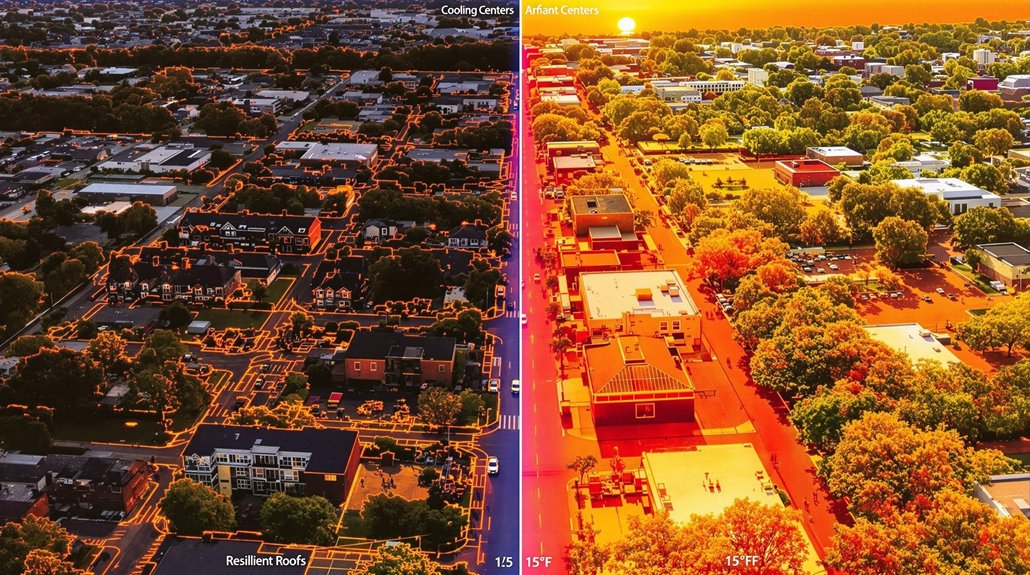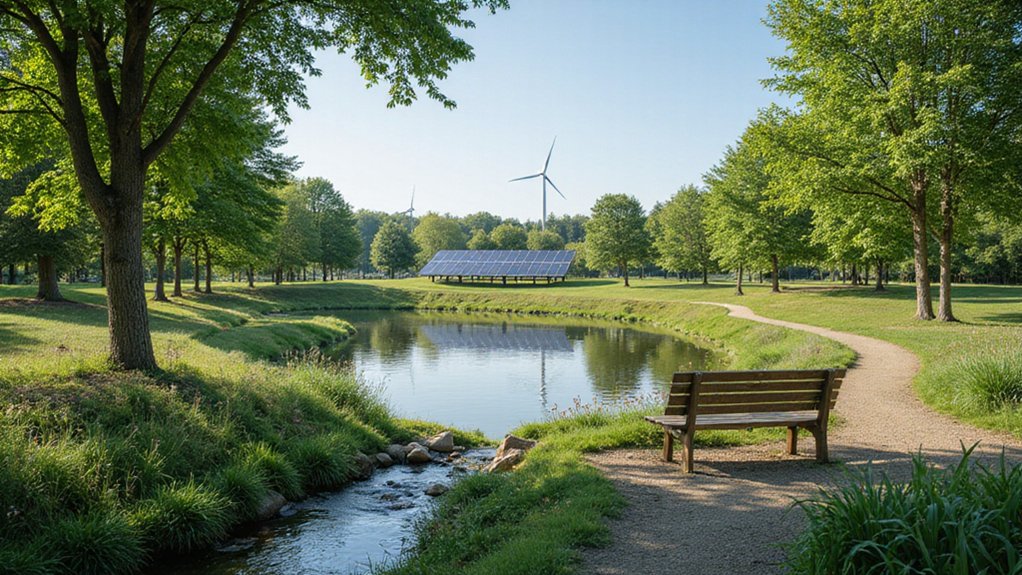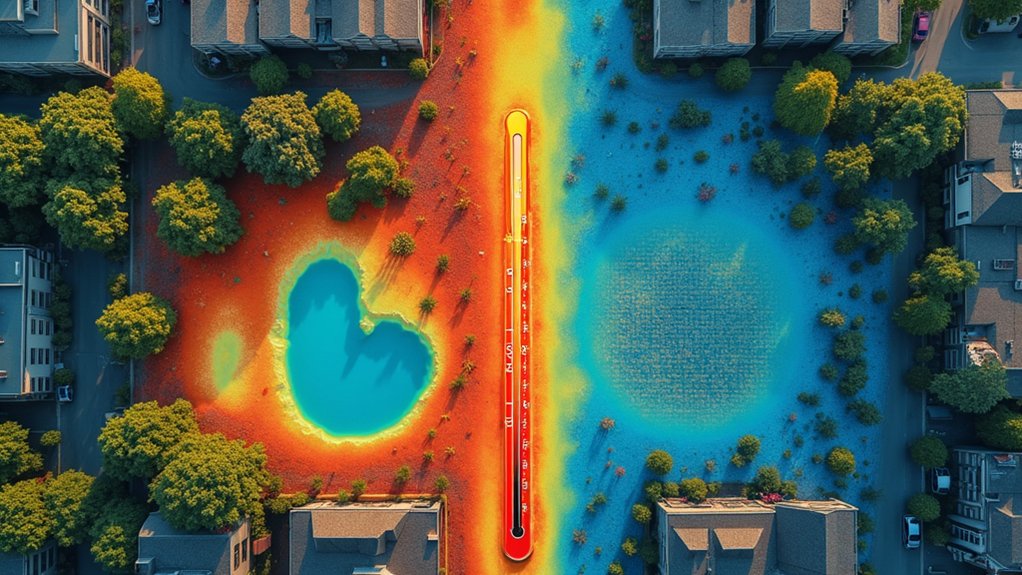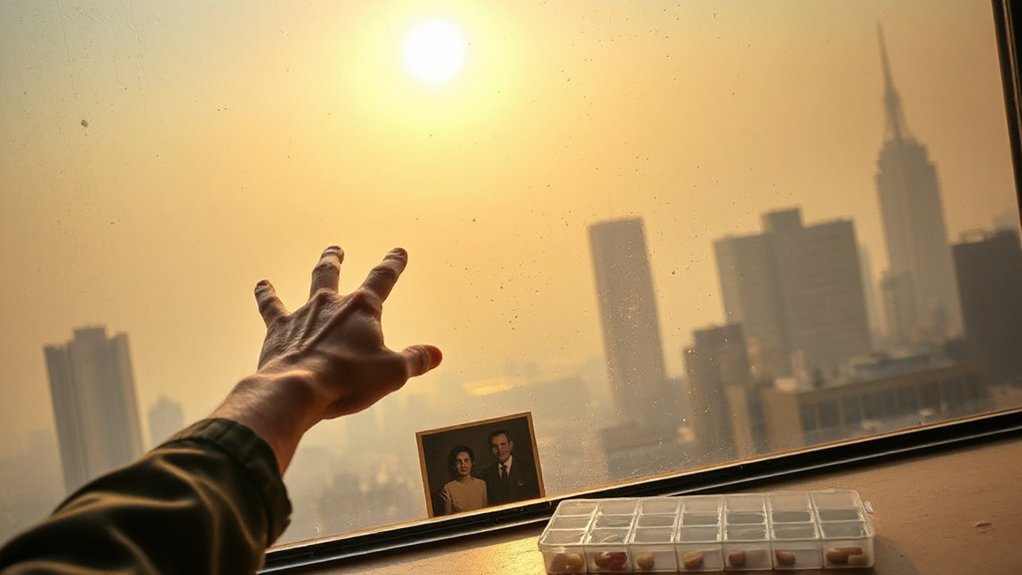As temperatures continue to climb across the United States, heat waves have become a growing threat to public health and safety. The data shows a troubling trend: the average number of annual heat waves in the U.S. has tripled from 2 in the 1960s to 6 in the past two decades. Over 170 million Americans were exposed to heat domes with temperatures exceeding 100°F in recent events.
Heat waves have tripled in frequency since the 1960s, endangering millions of Americans with dangerous temperatures above 100°F.
Heat-related health impacts include increased deaths, heat strokes, and hospital visits. Rising temperatures also lower worker productivity and make social inequalities worse. Scientists view extreme heat as an inevitable outcome of climate change and growing urban development. Meteorologists now issue heat warnings with high accuracy before extreme heat events occur.
Cooling centers offer significant protection, reducing the risk of heat-related death by up to 66% according to research. However, their effectiveness varies by location and how well they target those most at risk. Since the absolute risk of heat-related death on any given day is low, millions might need to visit cooling centers to prevent a single death in some situations.
People can defend themselves against heat with air conditioning, drinking more fluids, and wearing light clothing. In very humid areas, blocking vents and keeping windows closed can help. Building design matters too—architecture, materials, and ventilation all affect indoor temperatures. Where a person lives, especially considering urban greenery and building age, impacts their heat risk. Similar to Alaska’s threatened ecosystems, these warming trends cause permafrost thawing that accelerates global climate instability.
The most effective approach combines multiple strategies. July 2023 set records when it experienced the hottest days ever recorded on Earth for four consecutive days. Integrated heat response plans that include forecasting, education, and mitigation save the most lives. Chicago’s experience shows this clearly: their 1999 heat wave response resulted in about 100 deaths, far fewer than the roughly 700 deaths in 1995 before they introduced coordinated alerts and response systems.
Urban planners can help by applying building codes suited for hot climates, using reflective materials and insulation. Green roofs, passive cooling techniques, and more urban green spaces all reduce the urban heat island effect. These approaches, along with retrofitting older buildings, can protect vulnerable populations and reduce reliance on energy-intensive air conditioning.
References
- https://pmc.ncbi.nlm.nih.gov/articles/PMC9378433/
- https://pmc.ncbi.nlm.nih.gov/articles/PMC9942165/
- https://www.epa.gov/heatislands/adapting-heat
- https://www.atlanticcouncil.org/blogs/new-atlanticist/as-another-brutal-heat-wave-hits-the-us-local-and-national-leaders-need-to-step-up/
- https://www.c2es.org/content/heat-waves-and-climate-change/








